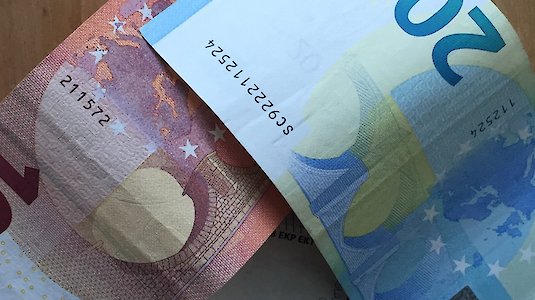Sustainable financial products under the spotlight
What contribution does the Austrian Ecolabel make to tackling the climate crisis - and to what extent did Ecolabel-certified equity funds differ from conventional equity funds in terms of carbon footprint? This question was investigated in a recent study by the VKI.
The number of Ecolabel certified financial products has been steadily increasing since the introduction of the UZ 49 guideline for sustainable financial products in 2004 - as of February 2022, 224 financial products already had such certification. The extent to which ecolabelled funds differ from conventional funds in terms of their carbon footprint was surveyed by the Verein für Konsumentenschutz (VKI) on behalf of the Federal Ministry for Climate Protection (BMK).
What is the carbon footprint?
In the fund sector, the carbon footprint refers to all greenhouse gas emissions that a portfolio accumulates as a result of the securities invested in. Normally, as in this study of 53 Ecolabel-certified equity funds, all emissions are taken into account that are directly related to the corporate sector (Scope 1) as well as those indirect emissions that occur as a result of purchased energy consumption (electricity, heat, etc.). Accordingly, there are different calculation methods: in the present case, the greenhouse gas emissions of all invested companies were summed up aliquot to the share of each company in the portfolio and standardised to one euro. For comparability, the carbon footprint of 15 conventional equity funds that do not pursue a sustainable investment strategy was calculated analogously.
Ecolabel funds clearly better
The outstanding result: an investment in a sustainable equity fund with an Ecolabel results in 72 percent lower emissions on average than an investment in a conventional equity fund. While an average of 16.21 kilograms of greenhouse gases are associated with each euro invested in an Ecolabel fund, 57.17 kilograms are produced by conventional equity funds. The carbon footprint of conventional equity funds is therefore more than three and a half times higher than that of ecolabelled equity funds. The result is also statistically highly significant - meaning: no coincidence, but an effect of the sustainable investment strategy required by the Ecolabel.
A comparison with a sustainable index (the VigeoWorld 120 Global, which combines the 120 best-rated stocks worldwide from a sustainability perspective) also shows that the carbon footprint per invested company is 26 percent lower on average for Ecolabel equity funds.
The journey to Paris
The accusation that sustainable funds are greenwashing can thus be empirically countered: this is definitely not true. Although the Paris climate goals have not yet been achieved, sustainability funds are definitely on the right track to get there. The market monitoring also revealed the last fossil impacts of the Austrian Ecolabel for Sustainable Financial Products - which means that further possible reduction potentials of the carbon footprint, for example through an expansion of the exclusion criteria as a result of the revision of the guidelines in 2023, are obvious and need to be discussed.
Sustainability: More than climate
In all this, however, it must not be forgotten: Sustainability in the fund sector is more than a lower carbon footprint. The Austrian Ecolabel stipulates a number of other criteria that contribute significantly to the sustainability and credibility of Ecolabel funds - but are not reflected in the carbon footprint. These include exclusion criteria in the areas of genetic engineering, nuclear energy or armaments, but also comprehensive criteria on sustainable investment strategy as well as transparency criteria so that consumers can get a comprehensive picture of eco-label funds.
Everything worth knowing about the criteria as well as the current guideline can be found here.
The methodology of the study
The calculation was based on data from Vigeo Eiris, a sustainability research provider offering Scope 1 as well as Scope 2 emissions from 11,576 companies worldwide.1 Scope 1 emissions include total global direct emissions from sources owned or controlled by the reporting organisation. Scope 2 emissions relate to indirect emissions from the consumption of purchased electricity, heating, cooling or steam.
Relative CO2eq emissions were calculated to determine the greenhouse gas emissions that a fund portfolio accounts for. In this process, the corresponding emissions of the company are allocated on the basis of the weight that a security has in a portfolio - the sum of all emissions weighted in this way results in the absolute CO2eq emissions. By dividing this figure by the invested funds ("assets under management"), the relative CO2eq emissions are calculated - with the advantage that different portfolios can thus be compared with each other. The disadvantage: the assets under management can have a distorting effect when funds of very different sizes are compared in relation to the money invested.
All results were examined by means of statistical tests to see whether they were descriptive random results or findings worthy of generalisation ("significance").
